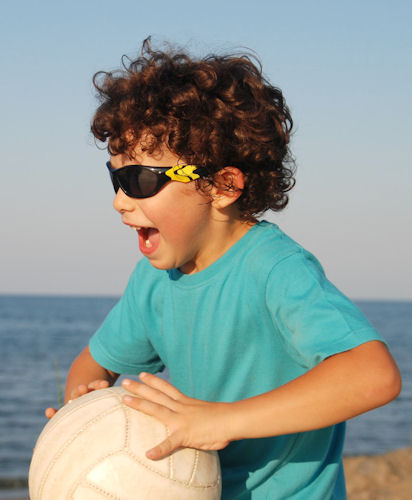Sports-related eye injuries are one of the leading causes of visual impairment and vision loss among children in the United States.
According to recent statistics on sports-related eye injuries and children:
- 43% of all sports-related eye injuries occur in children ages 15 and under.
- Less than 15% of children wear any form of eye protection when participating in sports activities.
Children that are involved in contact sports on a regular basis are at a high risk of getting hit in the eye from fast flying balls, being jabbed, poked, or tackled by an opponent, or even getting cut in the eye from broken optical lenses.
Regular eyeglass frames do not provide enough protection from sports-related activities and can be easily damaged.
Fortunately, with the right protective eyewear, up to 9 out of 10 sports-related eye injuries can be prevented.
Contact an eye doctor near you to discuss how to achieve the best vision possible.
SEE RELATED: Choosing Glasses for Your Face Shape
What is protective eyewear?
Protective eyewear contains strong, impact resistant polycarbonate lenses, which are unlikely to break or shatter if they are hit by a flying object or knocked off during a sports activity.
If your child is involved in sports, protective eyewear such as sports goggles, wrap-around polycarbonate lenses, or side shields can prevent many eye injuries and damage to regular eyeglasses.
Protective eyewear is available with or without a prescription lens to allow for clear vision, while providing maximum protection.
Protective eyewear is essential for all sports— hockey, basketball, football, soccer, baseball, tennis— and any other sport where the athlete is in motion.
What makes polycarbonate lenses the preferred choice?
Polycarbonate is the most popular choice for sports goggles.
While not completely indestructible, polycarbonate is the strongest plastic lens material available, and is widely known for its high impact resistance, durability and built-in UV protection.
While protective eyewear is generally recommended to reduce the risk of eye injuries, these glasses can also increase peripheral vision and even improve your child’s sports performance— since they can focus on the game without worrying about losing or breaking their regular eyeglass frames.
Wearing protective eyewear is the best way to protect your child’s eyes and vision.
LEARN MORE: Optical and Contact Lenses
Schedule an appointment with an eye doctor to assess your child’s vision and visual needs, and to determine which type of protective eyewear is right for your child.


